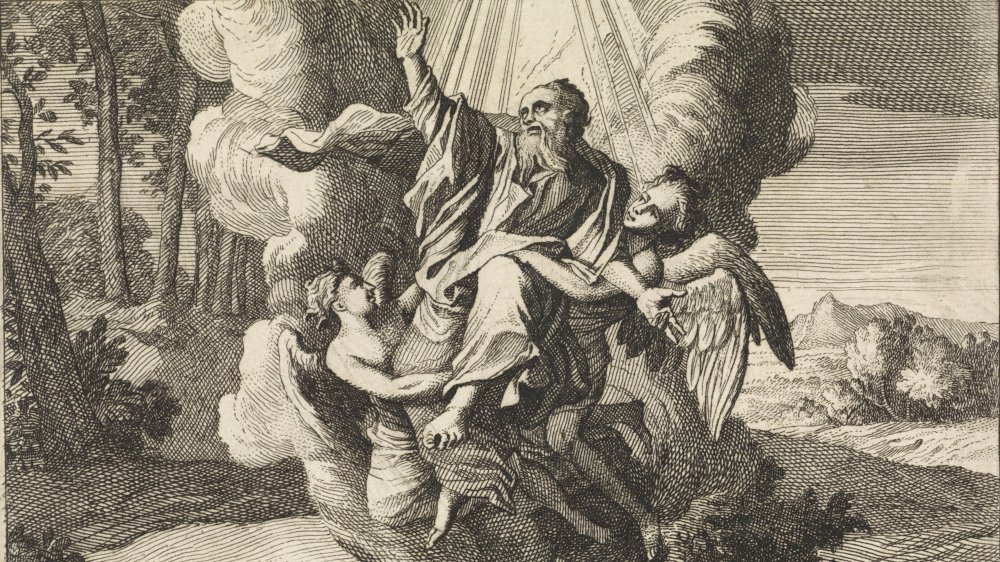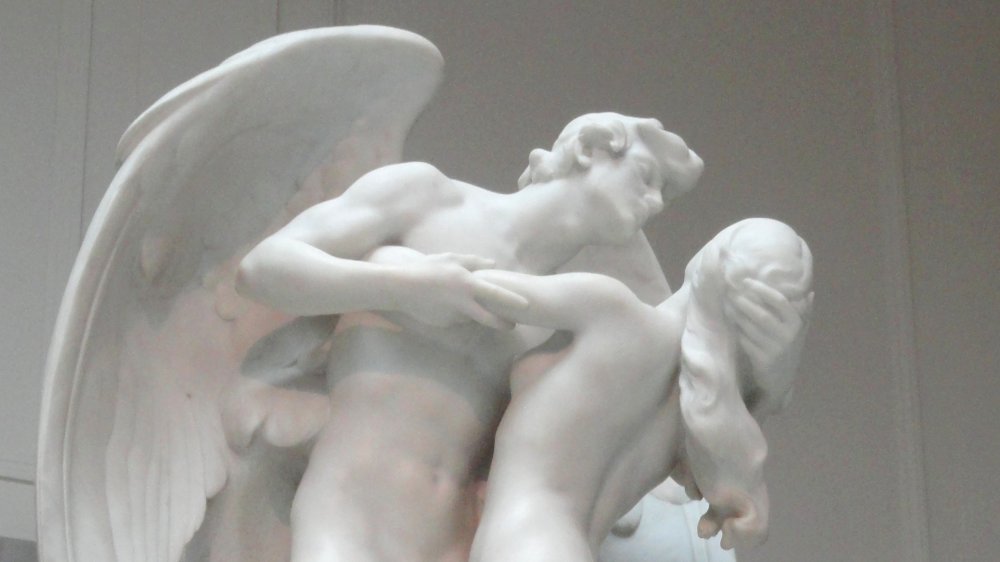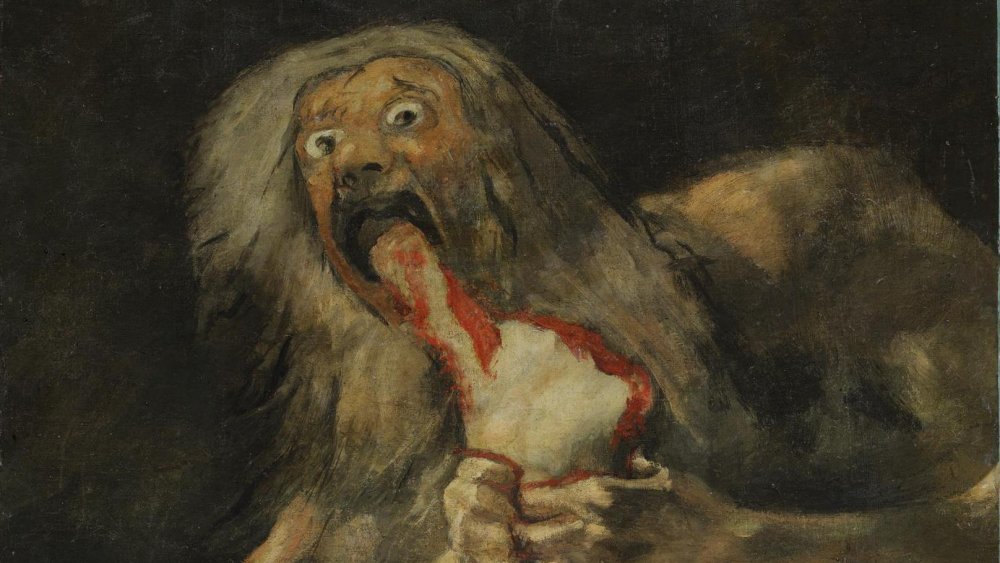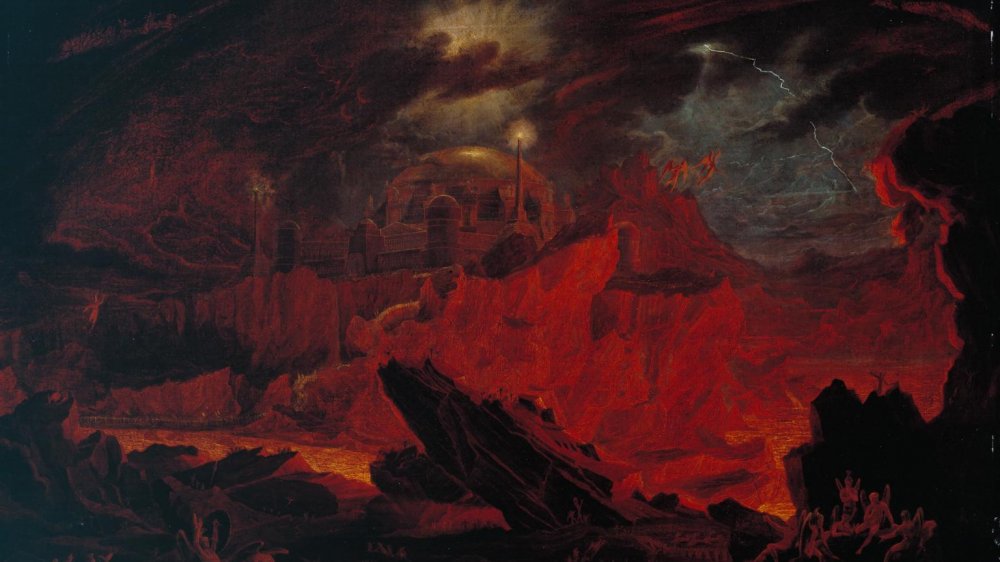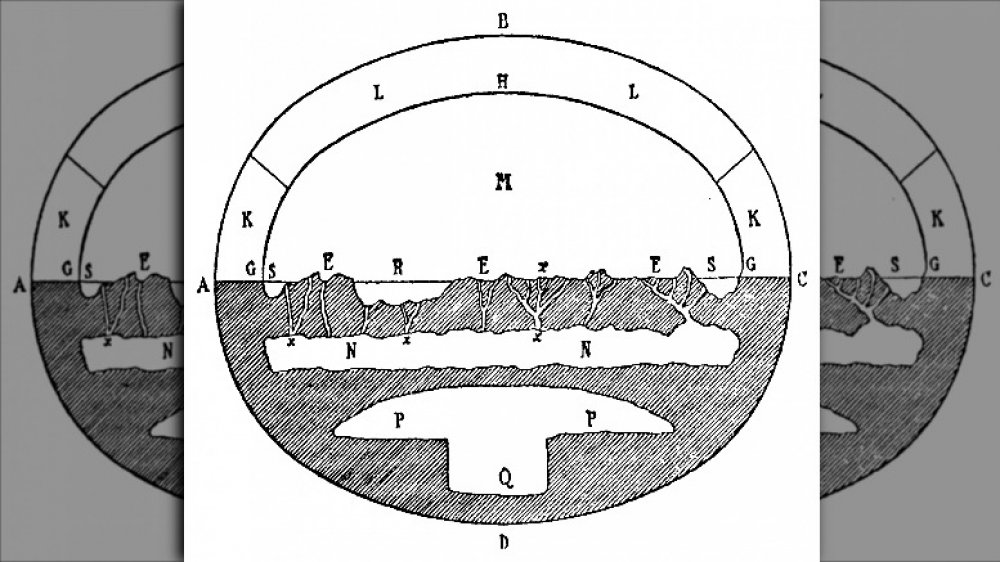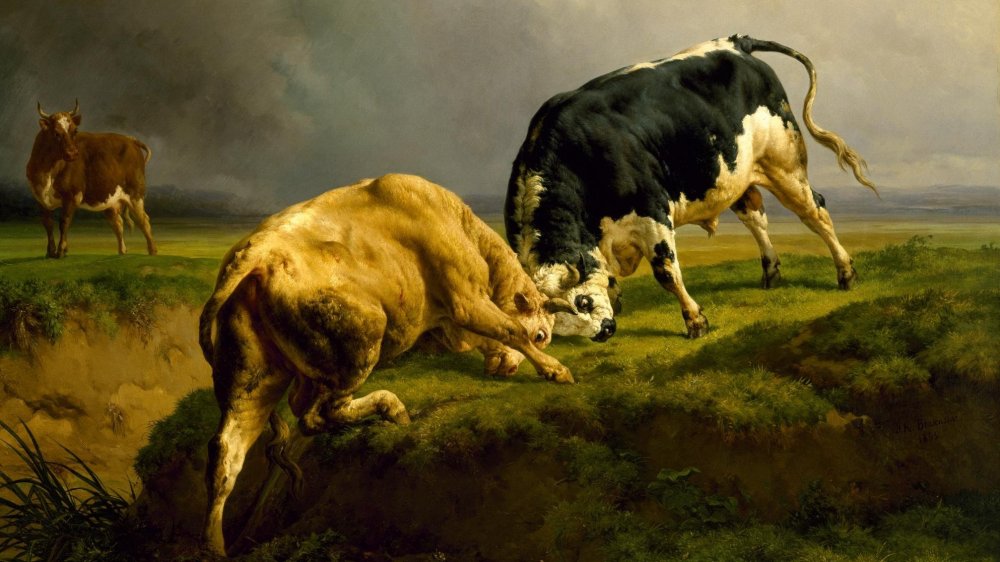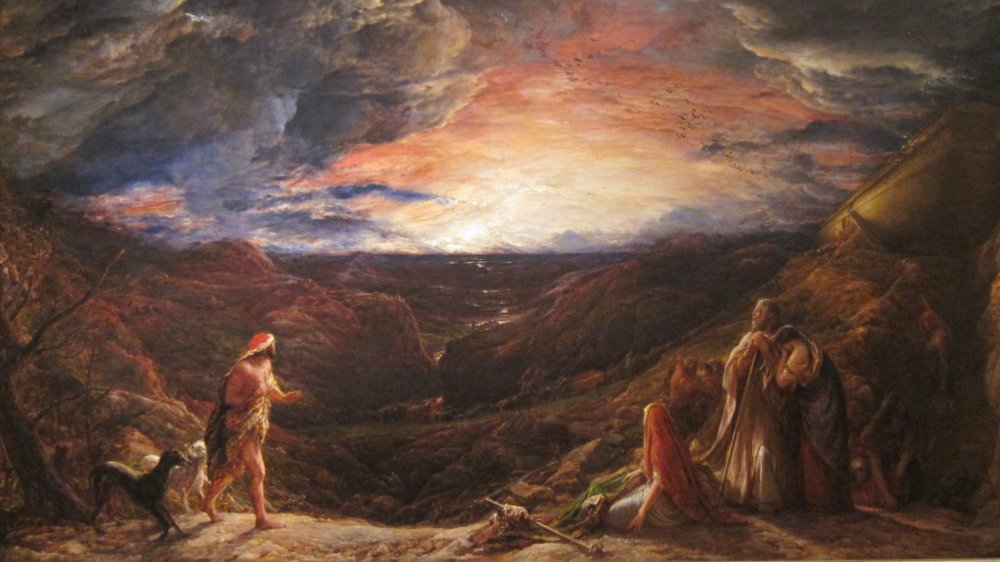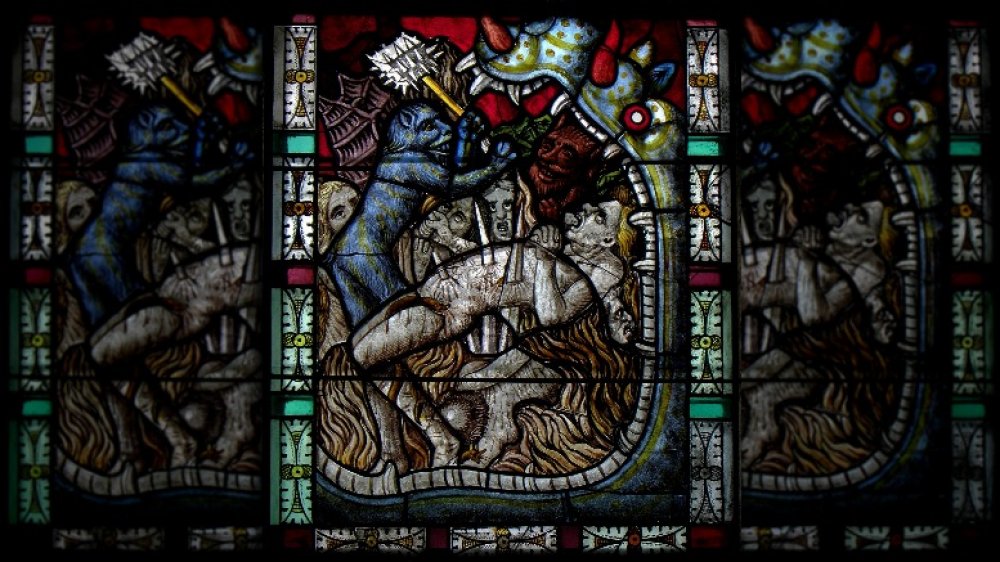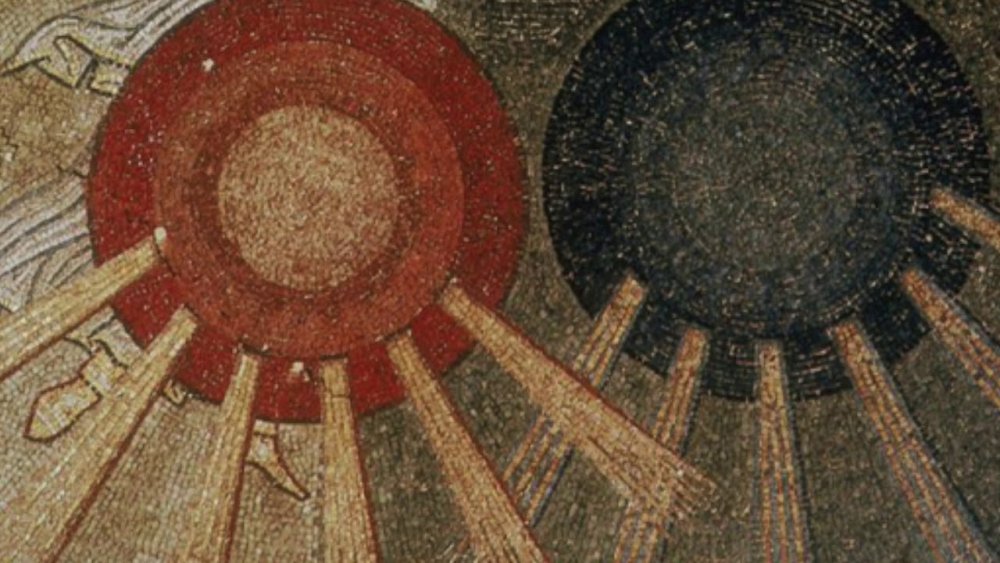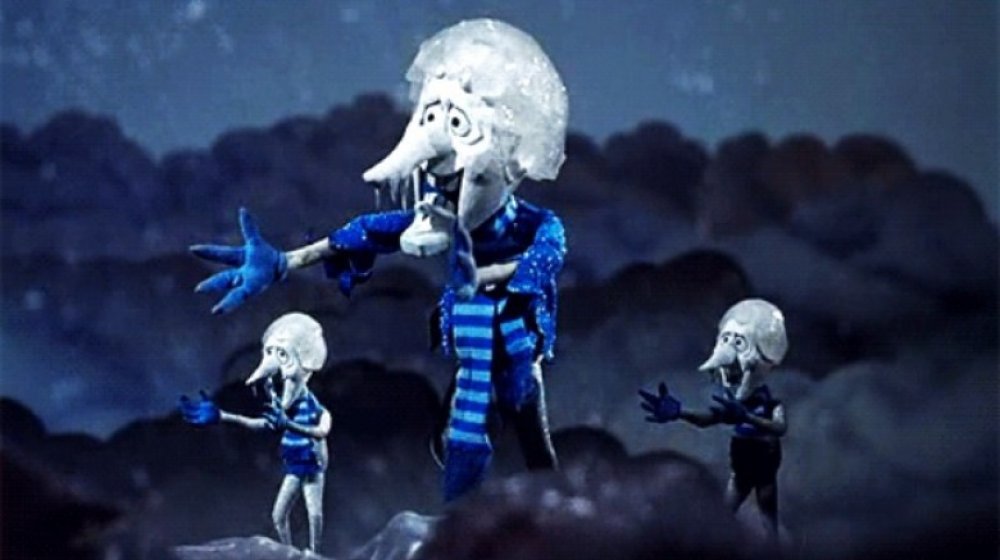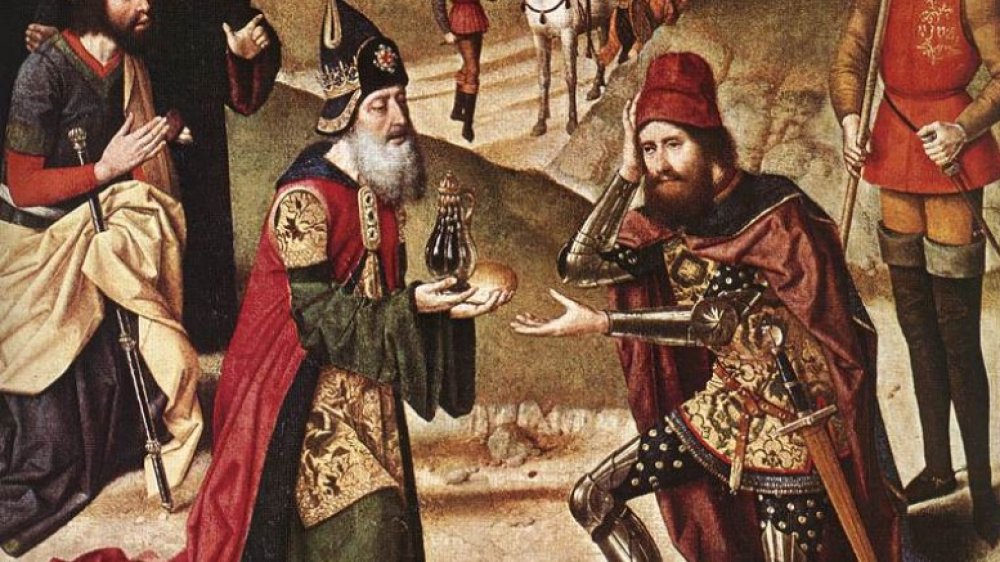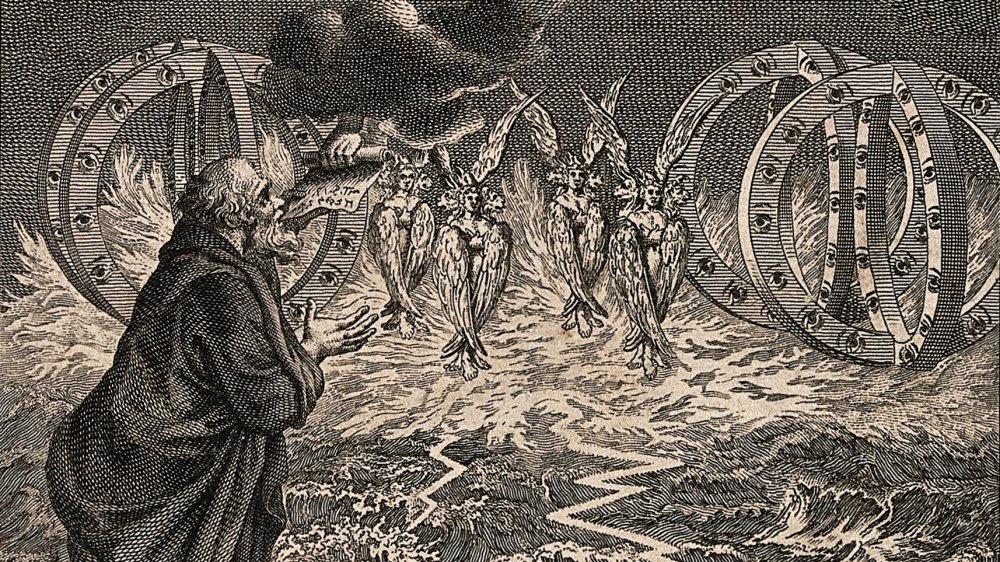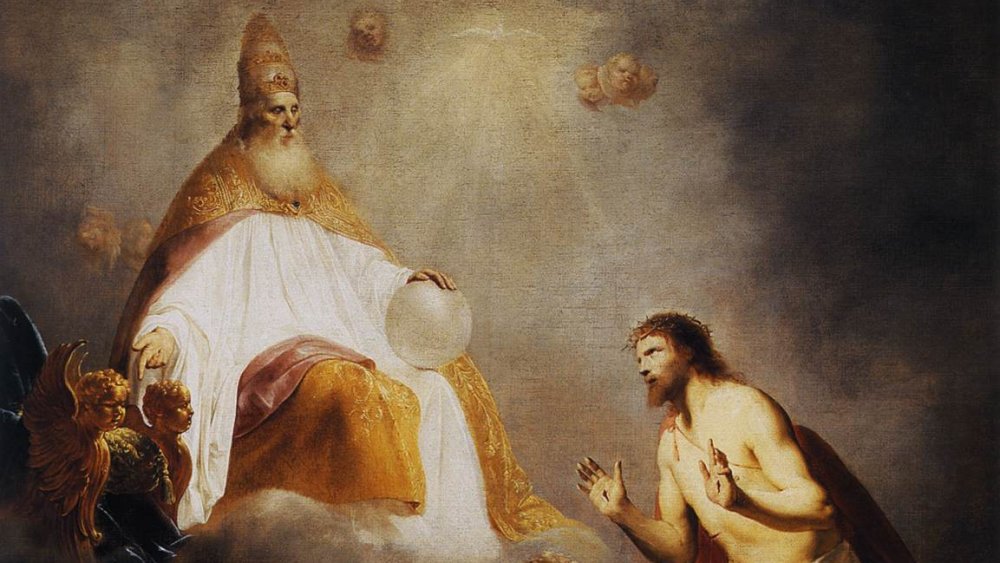Messed Up Stories From The Book Of Enoch
Few ancient texts arouse quite the same curiosity as the Book of Enoch, a Jewish text attributed to Noah's great-grandfather that was, as some sensationally put it, "forbidden from the Bible" for revealing mystic secrets about the mysteries of creation. It's a book full of lusty fallen angels, cannibalistic giants, strange cosmology, and revelations about the end of the world.
But the fact is, the Book of Enoch is actually part of the Bible in some Christian churches, and the canonical New Testament book of Jude quotes it, so this was clearly an important text to both Jews and Christians at one time. But that doesn't mean it's not still full of weird stuff, because it definitely is: strange primordial beings, talking babies, stars with human downstairs parts, a corpse giving birth, and way more. Here is but a sampling of some of the strangest bits of the three–yes, three–Books of Enoch.
The angels who traded forbidden knowledge for sex
The Book of Enoch, or more appropriately 1 Enoch since there are three books on the subject, is a hugely influential work made up of various documents from different periods in Jewish history, which helped form both Jewish and Christian ideas about angels, the nature of the universe, and the afterlife. These documents were eventually compiled into a single book that only survived to modern times in Ge'ez, an ancient language of Ethiopia, whose church still recognizes 1 Enoch as canon. The first portion of the book is called the Book of Watchers, which refers to a host of angels who gave up that heavenly life in order to go to the bone zone with some human women.
This section of the book is an expansion of a somewhat elliptical passage in Genesis chapter 6 that talks about "sons of God" who took wives from among the "daughters of man." 1 Enoch tells us in no uncertain terms these "sons of God" were angels, known as Watchers, led by the angel Semjâzâ, the Ethiopic version of the name Samael. Altogether there are 200 Watchers who swear an oath to all be horny together. These fallen angels teach the human women forbidden arts, such as magic spells and enchantments, making weapons and waging war, astrology, a love for earthly delights such as jewelry and other ornaments, and–perhaps the evilest of all–cosmetology.
The unholy offspring of humans and angels
Genesis 6 tells us the sons of God and the daughters of man gave birth to a race called the Nephilim, which it then describes as "the heroes that were of old, warriors of renown." But 1 Enoch doesn't interpret the Nephilim as heroic in any traditional sense. Instead, the Book of Watchers describes the Nephilim as "great giants, whose height was three thousand ells." (An ell is an old measurement equal to about 45 inches, so these giants were about 11,250 feet, or just over two miles, tall.) Enoch is not the only source for this interpretation of the Nephilim; it can also be found in, for example, The Book of Giants, one of the Dead Sea Scrolls.
1 Enoch goes on to say these enormous giants soon ate up all the regular humans' food, at which point they began eating the humans themselves. When this couldn't sate their hunger, they then started eating birds, beasts, reptiles, and fish, finally resorting to eating each other and drinking their own blood. The surviving humans' cries of terror and anguish were so loud they could be heard from Heaven, and this, we learn, was the real reason God flooded the Earth. It was not strictly that humans were so sinful, but that angel-human hybrid giants were ruining everything for everyone and God thought he'd maybe just start over.
The four smooth pits of Hell
There are two short passages from the book of Genesis that 1 Enoch serves to expand on. The first is the bit about the Nephilim, but the remainder of the book focuses on its title character, Enoch, the father of Methuselah, about which Genesis 5 says cryptically, "Enoch walked with God; then he was no more, because God took him." The traditional understanding of these few words is that God liked Enoch so much that Enoch never died, but rather God just brought him up to Heaven to hang out until the end of time. And Enoch the book, as a result, is largely about Enoch the guy arriving in Heaven and learning what's really going on when you pull back the cosmic curtain.
In chapter 22, Enoch learns Sheol–an Underworld from before the idea of Hell had fully congealed, which is basically a waiting room for the dead to sit in until Judgment Day–is made up of four smooth pits: one full of the righteous who flourished in life, one for the righteous who suffered in life, one for the wicked who flourished in life, and one for the wicked who suffered in life. Adam's son Abel serves as the chief advocate of the righteous dead. In chapter 24, Enoch is shown the New Eden where the righteous will go after judgment and eat eternally of the Tree of Life.
The secret mechanisms of Heaven
A large portion of the Ethiopic Book of Enoch is devoted to Enoch's angel-guided travels through the secret mechanisms of the Heavens and the Earth. Without context, a lot of the revelations might sound cuckoo-bananas in terms of how everything is laid out. With a little more context, uh, it's marginally better. Much of the ancient world believed the Earth was basically shaped like a snow globe: a flat disc of land surrounded by water, a dome of sky covering it with the stars fixed on its inner surface, and different layers of Heaven between the breathable air and outer darkness. There are some notable YouTubers who also believe this.
In chapter 18, Enoch sees the warehouses in the upper air where the winds are stored, as well as mountains made of precious gems, giant columns of fire, and the literal edge of the Earth, beyond which there is only a gaping abyss. In chapter 41, Enoch sees more cosmic warehouses, where angels store hail and winds, mists, clouds, and the sun and moon. The entire third section of 1 Enoch, however, is known as the Astronomical Book, and for good reason. It lays out the clockwork-like mechanism of the paths of the sun and moon across the sky, and how they follow tracks much like a roller coaster through multiple doors in Heaven, accounting for the movement of the sun during the year.
Enoch's weird animal dream
The fourth major section of 1 Enoch is known as The Book of Dream-Visions, where Enoch has, well, dream-visions of symbolic import. The first dream warns Enoch of the coming flood that only his great-grandson Noah will survive. The second dream gets much weirder. Enoch sees a white bull, and then a heifer, and then a red bull and a back bull. The black bull gores the red bull. Soon there are many white bulls, born from one giant white bull. Stars start falling from Heaven with their ding-dongs out–described as being horse-like–and make babies with the bulls, and these babies are elephants, camels, and donkeys. After a great destruction, the world is filled with lions, tigers, wolves, and all manner of beasts. It kind of goes on like this for a while.
While at first glance it might seem like this is a bunch of animal nonsense, it doesn't take a lot of digging beneath the surface to realize this dream represents an allegorical version of the history of the Israelite people. The original white bull and heifer are Adam and Eve, and the black bull who kills the red bull are Cain and Abel. The falling stars are the apparently massively endowed fallen angels, and so on. The dream eventually foretells the forthcoming Messianic Period, but the accuracy of the allegory starts to get hazy around the time 1 Enoch was composed.
The secret origin of Noah
The first Book of Enoch ends with a couple of appendices that originally belonged to an otherwise lost text known as the Book of Noah. Chapter 106 of 1 Enoch begins the story of how Enoch's famous great-grandson Noah was born. The story goes that when Enoch's grandson Lamech and his wife gave birth, the baby was "white as snow and red as the blooming of a rose, and the hair of his head and his long locks were white as wool, and his eyes beautiful." The problem with those beautiful eyes is when he opened them, solar beams shot out of them, filling the whole house with sunlight and blinding everyone inside. At this point, the baby Noah stood up in the midwife's arms and began talking to God. Lamech, understandably terrified, runs to his father Methuselah and tells him he's worried his wife accidentally gave birth to some kind of angel baby.
Methuselah is like, "I'll go ask my dad, because he lives with angels." So Methuselah finds Enoch chilling at the edge of the world and tells him the situation. Enoch tells him there are actually angel babies on the Earth right that minute, and they're way more messed up than baby Noah. In fact God is going to murder the world because of those messed up babies, and Lamech's baby will be the only one to survive.
It turns out Hell is in Heaven
While 1 Enoch is known as the Ethiopic Enoch because it was preserved in the Ethiopic language of Ge'ez by the Ethiopian Orthodox Church, 2 Enoch, aka the Secrets of Enoch, is also known as Slavonic Enoch, because it was preserved in the Eastern European liturgical language known as Church Slavonic. The Ethiopic Enoch shows God's new best friend getting a general look at the afterlife, but Slavonic Enoch takes him on a step-by-step tour of each individual level of Heaven. If you're familiar with '90s dramedies, you might know about Seventh Heaven, but the Heaven of 2 Enoch is actually made up of 10 Heavens, and not all of them are what you might expect.
In chapter 3, the angels show Enoch First Heaven, which is a giant Sky Ocean, larger than any ocean on Earth. It might seem strange there's an enormous ocean in the sky until you stop to wonder where rain comes from, and then it all makes sense. First Heaven is also full of angels who push the stars around and the warehouses where they keep the snow and dew. Second Heaven might trip you up a bit, because it's, well, it's a torture chamber for fallen angels. Third Heaven might be even worse, because it's literally Hell, where the damned burn in eternal fire. You know, in Heaven.
God's two thick boys
If you've ever been to Sunday School, chances are you're familiar with the Bible's account of creation: God said "let there be light" and there was light, and then he separated the light from the darkness, etc. What the Bible didn't tell us is he used enormous primordial chunky boys to do it. Fortunately, the Second Book of Enoch is here to fill in that blank for us. Chapter 25 tells us when God wanted to create visible things out of the invisible, he summoned a being called Adoil, who has a big potbelly full of light. God tells him to explode and let all the light out, and he does. This is the Enochian version of the Big Bang, it seems.
After God has created the upper foundations of the cosmos by summoning Adoil from above, he creates the lower foundations by summoning a being named Archas from below. In chapter 26, Archas is described as "hard, heavy, and very red." Likewise God tells Archas to explode and become the foundation for the lower darkness, which he does. The blog Bible Brisket points out it is through these two beings God creates the cosmic dualism of light and darkness, but he apparently does not create Adoil and Archas themselves, though he does control them. The idea God was just chilling with two explosive chubby dudes before creation is a pretty wild one.
A literal snow angel freezes Enoch's face
In the Book of Exodus chapter 34, we learn Moses has spent so much time face to face with God, both having chats in his tent and up on Mount Sinai, hashing out the Ten Commandments, that his face had absorbed some of the glory of God and began to shine. In fact, his face was so radiant that none of the other Israelites could bear to be in his presence. To adjust for this, Moses had to start wearing a veil over his face when he was in the presence of mere humans. In 2 Enoch, we see there's a similar danger for Enoch after his extended tour of Heaven and tete-a-tete with God. After God has told Enoch the secret account of creation that not even the angels know, he gives Enoch 30 days in which to return to Earth to warn his son Methuselah about God's judgment and the coming flood.
In order to avoid the danger of Enoch returning home and immediately flash-frying his family with the absorbed light of God's glory reflecting from his face, in chapter 37, God summons an angel who looks like the Snow Miser: "in appearance white as snow, and his hands like ice, having the appearance of great frost." His job is to freeze Enoch's face so other humans can behold him without dying.
Another, different magic baby
Much like how 1 Enoch ends with a strange appendix about the supernatural birth of Noah, 2 Enoch also has a strange section at the end of its text about a miraculous birth. But in this case, it's about someone a little less famous than Noah: this passage is known as The Exaltation of Melchizedek, a figure who rates little more than a passage mentioning in Genesis chapter 14 as a king and priest who brings bread to Abraham. Melchizedek is an interesting and mysterious figure, because of his role as both king of a city (probably Jerusalem), and as a priest of a god that maybe wasn't big-G God but that Abraham revered anyway. In Psalm 110, Melchizedek is mentioned as a kind of prototype Messiah, so there's definitely something going on.
The Exaltation tries to fill in some blanks by telling us his mysterious origin: he was conceived as a virgin birth by a woman who was barren, and when her husband found out she was pregnant, she died of shame. The husband rushes to his brother, Noah, for help in hiding her body. When they get back, however, they find the child sitting on the bed, fully grown, fully dressed with a badge of the priesthood on his chest, and praising the Lord. Then the archangel Gabriel comes and takes him to the Garden of Eden so he will survive Noah's flood.
Enoch gets an upgrade
The Third Book of Enoch is also called the Hebrew Enoch, because–you can probably guess–it was preserved in the Hebrew language. It is also known as The Book of the Palaces or, more relevantly, The Revelation of Metatron. 3 Enoch differs from the first two Books of Enoch in that while 1 and 2 Enoch feature the titular Enoch as our POV character as he witnesses the secrets of life, the universe, and everything while guided by angels and by Big G himself, in 3 Enoch the main figure is one Rabbi Ishmael, who ascends to Heaven in a dream-vision, where he is guided by a terrifying angelic presence called Metatron.
Who is Metatron? He's Enoch. Well, he's like Enoch-Plus. According to chapter 9, once Enoch was raised to Heaven, God turned him into a kind of super-angel, "the size of the length and width of the world," with "72 wings ... 36 on each side," and "365 eyes [and] each eye was as the great luminary." Metatron sits on a throne next to God's and serves as "God's representative and ruler over all the princes of kingdoms and all the children of heaven." God crowns him and calls him "the lesser YHWH." Also his skin is flames, his bones are coal, his eyelashes are lightning, and his eyeballs are burning firebrands. Quite an upgrade for old Enoch.
This is the story of a God who cried five rivers and drowned the whole world
The First Book of Enoch goes into detail about God's destruction of the world by flood, and the Second Book gives a complete history of the Israelite people up till judgment day and the Messianic Age, but 3 Enoch takes a deeper dive into the end times. In chapter 45, Metatron reveals to Rabbi Ishmael the secrets of both past ages and future ones, including the eras of both the more famous Davidic Messiah, a military leader who will defeat the evil nations of Gog and Magog, and also the lesser known Messiah from the line of Joseph, whose job is to prepare the world for the coming of the Davidic Messiah.
In the book's final chapter, Metatron takes Ishmael to see the Right Hand of God, which has lain hidden since the destruction of the Holy Temple and not even the angels can see it until the day of salvation. At that moment, tears begin streaming down each of the five fingers of God's Right Hand, which fall into the sea and cause the Earth to begin shaking to pieces. Although God searches the Earth and finds no one worth redeeming, he decides to save Israel for the sake of his own justice and righteousness. He prepares to send the Messiah to lead the Israelites to safety in Jerusalem, while he unleashes his terrible power on the evil nations of the Earth.
